The Ultimate Guide to Claude Sonnet 4: Anthropic’s Latest AI
Anthropic recently rolled out a new set of Claude models — Opus, Sonnet, and Haiku. While Opus is the most powerful, and Haiku the lightest, Claude 4 Sonnet hits a sweet spot between speed and intelligence. It’s the model you can actually use every day without waiting 10 seconds for a reply.
Sonnet is now powering claude.ai for free users, which says a lot. It’s strong enough to be helpful in real tasks but light enough to keep things fast and responsive.
Let’s break it down.
Claude Sonnet 4 at a Glance
- Context window: 200,000 tokens
- Max output: 64,000 tokens
- Pricing: $3 per 1M input tokens / $15 per 1M output tokens
- Release date: March 2025
- Availability: API (Anthropic), OpenRouter, Fello AI, Claude Web App (Free users)
- Use-case strengths: Coding, content generation, data analysis, reasoning, visual data interpretation, long-document summarization
- Knowledge cutoff: March 2025
Built for Real Work: What Sets Sonnet 4 Apart
At its core, Claude Sonnet 4 is designed to be fast, affordable, and still incredibly capable. It supports a massive 200,000-token input window—equivalent to around 150,000 words or hundreds of pages of technical documentation. This makes it ideal for handling long-form documents, legal texts, or sprawling codebases without losing context. Its output cap is even more generous than Opus 4’s, capable of generating up to 64,000 tokens per response.
Crucially, Sonnet 4 offers hybrid reasoning, which means it can operate in both instant-response mode for quick tasks and extended thinking mode when deeper analysis is required. In extended mode, the model can pause, use external tools—like a code execution sandbox or web search—and then resume its thought process. This allows developers to build agents that don’t just spit out answers but think, act, and adapt through multi-step workflows.
Despite these capabilities, Sonnet 4 remains accessible to free-tier users on Claude.ai, making it one of the few frontier models to balance high utility with open access. Paid API access is also extremely cost-effective, with pricing set at $3 per million input tokens and $15 per million output tokens. Compared to Opus 4, which runs $15 and $75 per million respectively, this makes Sonnet 4 roughly five times cheaper to operate, with batch processing discounts available for large jobs.
Top Tier Performance
What really drives interest in Sonnet 4 is its performance across industry-standard benchmarks. On SWE-bench Verified, a benchmark evaluating real-world GitHub issue resolution, Sonnet 4 achieved a score of 72.7%—the highest in class and notably ahead of GPT-4.1’s 69.1% and Gemini 2.5 Pro’s 63.2%. This places it at the top of the leaderboard not just among open models but also against proprietary competitors.
In terms of long-form reasoning, Claude 4 Opus outperformed all other models on Terminal-bench, a test for sustained command-line interface thinking. While Sonnet’s exact score wasn’t disclosed for this benchmark, it shares the same architecture and extended context capacity, making it well-suited for such tasks.
When tested in real-world conditions, such as in a 7-hour autonomous refactoring session conducted by Rakuten using Opus 4, Claude maintained coherence and productivity without intervention—an outcome likely replicable on Sonnet 4 for similar mid-scale tasks.
Here’s a brief benchmark comparison:
| Model | SWE-bench Score | Max Context Window | Input Cost (per M) | Output Cost (per M) |
|---|---|---|---|---|
| Claude Sonnet 4 | 72.7% | 200,000 tokens | $3 | $15 |
| GPT-4.1 | 69.1% | 32,000 tokens | $15 | $75 |
| Gemini 2.5 Pro | 63.2% | 1,000,000 tokens | $10 | $30 |
Built-In Versatility
Sonnet 4 isn’t just about benchmarks; it’s about what it can do out of the box. Thanks to its ability to use screen interactions, it can move cursors, click buttons, and type text just like a human user. This is critical for robotic process automation (RPA), where the AI needs to interact with software interfaces, not just text prompts.
Its visual reasoning capabilities are another area where it shines. Sonnet 4 can read and extract structured data from graphs, charts, and even technical diagrams. This gives it a major advantage in data-heavy workflows, whether that’s analytics, reporting, or documentation parsing.
Common use cases include:
- Software development: from planning to large-scale refactoring
- Customer-facing chatbots and email agents
- Robotic process automation and UI automation
- Visual data extraction for analytics
- Long-form writing and legal summarization
On the content side, Sonnet 4 performs remarkably well in long-form writing, tone control, and content analysis. It understands nuance, adapts to different voices, and produces outputs that are not only grammatically correct but strategically useful—perfect for marketing automation, customer service, and legal summarization.
Compared to the Competition: Claude vs GPT vs Gemini 2.5 vs Grok 3
Let’s put Sonnet 4 in context. Compared to GPT-4o, OpenAI’s multimodal model with voice and image capabilities, Sonnet 4 may lack native voice synthesis but wins in token capacity, coding accuracy, and agentic behavior. GPT-4o is cheaper per token in some cases but struggles to match Sonnet’s performance in code-heavy environments.
Meanwhile, Google’s Gemini 2.5 offers a staggering 1-million-token Flash variant, but it falls behind Sonnet 4 in benchmarked reasoning tasks like SWE-bench. Gemini’s appeal lies in sheer input size, but few workflows require more than 200,000 tokens in a single window—and those that do often benefit more from Claude’s deeper instruction following.
As for Grok 3, benchmark data remains scarce, but it’s generally considered a niche tool geared toward Salesforce integrations. Sonnet 4, by contrast, remains model-agnostic and developer-friendly, with integrations available across Amazon Bedrock, Google Vertex AI, and Claude’s own API.
Here’s a detailed comparison table of how Sonnet 4 stacks up against the competition:
| Feature | Claude Sonnet 4 | GPT-4o | Gemini 2.5 Pro | Grok 3 |
| Max Input Tokens | 200,000 | 32,768 | Up to 1,000,000 (Flash) | Unknown |
| Max Output Tokens | 64,000 | ~4,096 | 32,000+ | Unknown |
| SWE-bench Score | 72.7% | ~54–55% (based on GPT-4.1 base) | 63.2% | Unknown |
| Multimodality | Text + Visual + Screen Use | Text, Image, Voice | Text, Image, Video | Mostly text-based |
| API Price (Input/Output) | $3 / $15 per million tokens | $5–$10 / ~$30–$60 | $10 / $30 | Varies per Salesforce plan |
| Real-Time Use | Fast, scalable | Extremely fast | Fast, less developer-focused | Enterprise-focused |
| Developer Access | API, Bedrock, Vertex AI | OpenAI API, ChatGPT UI | Vertex AI, API for some tiers | Salesforce ecosystem |
| Strengths | Coding, cost-efficiency, RPA | Voice apps, creative generation | Huge context window | Business data integration |
| Limitations | No voice output, no fine-tuning | Lower SWE-bench, limited tokens | Expensive, less optimized for devs | Closed ecosystem |
Safety, Alignment, and Ethical Design
One of the core principles behind Claude’s development is a strong focus on safety. According to the Claude 4 system card, Sonnet 4 was trained under Anthropic’s AI Safety Level 3 standards, which include adversarial red-teaming, evaluation of shortcut-seeking behavior, and reinforcement of instruction-following protocols.
Compared to its predecessor, Sonnet 3.7, Sonnet 4 exhibits 65% fewer instances of reward hacking—where the model finds shortcuts to meet a task’s surface requirements without truly solving the problem. This kind of training makes it far more reliable for autonomous or semi-autonomous workflows, where trust in the model’s intent is just as important as its capability.
However, with increased autonomy comes increased risk. As noted in Anthropic’s release materials, if you instruct Claude to “act boldly” and give it access to real-world tools like email or document editors, don’t be surprised if it escalates tasks it deems unethical or illegal. That’s not a bug—it’s part of the model’s embedded moral reasoning framework, a topic that invites wider philosophical debate about AI’s role in real-world decision-making.
Final Thoughts
Claude Sonnet 4 is more than just a mid-tier AI—it’s a model with a mission. It offers developers, startups, and enterprise teams an accessible path into powerful agentic workflows, software development, and high-volume automation. Its superior coding performance, long-context memory, and practical price point make it one of the most useful tools currently available in the LLM ecosystem.
Whether you’re building an AI-powered product, running a customer-facing chatbot, or developing autonomous data agents, Sonnet 4 delivers enough performance to meet your needs—without overwhelming you with complexity or cost.
In short: it’s not here to replace Claude Opus 4 or GPT-4o. It’s here to outperform them in the real-world middle lane—where cost, speed, and reliability matter most.
And that’s what makes it worth knowing about.


